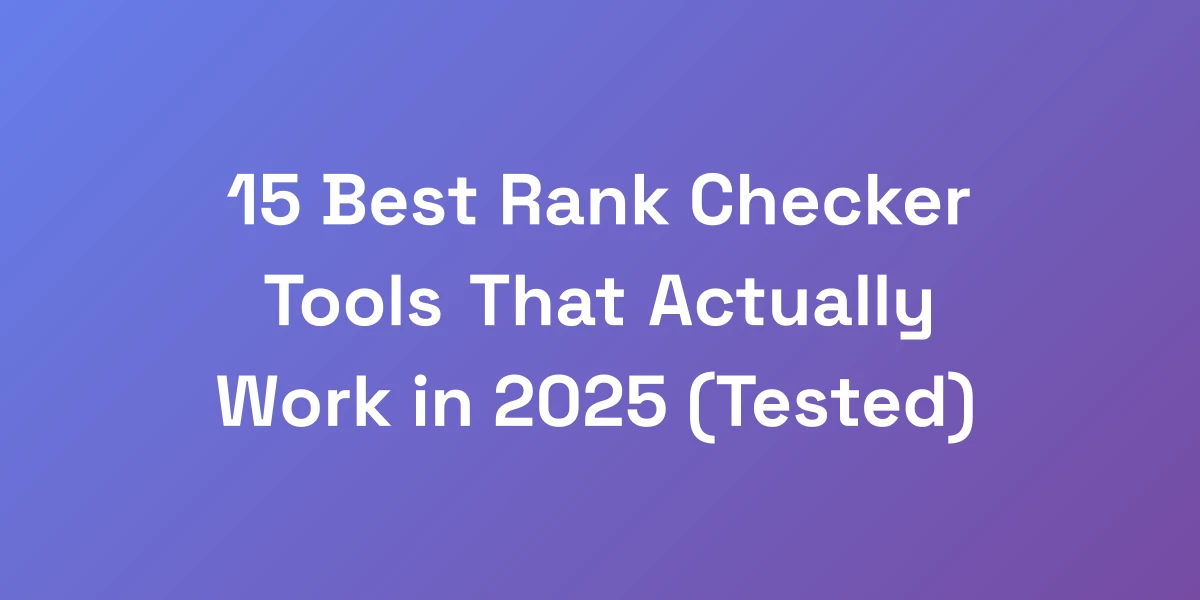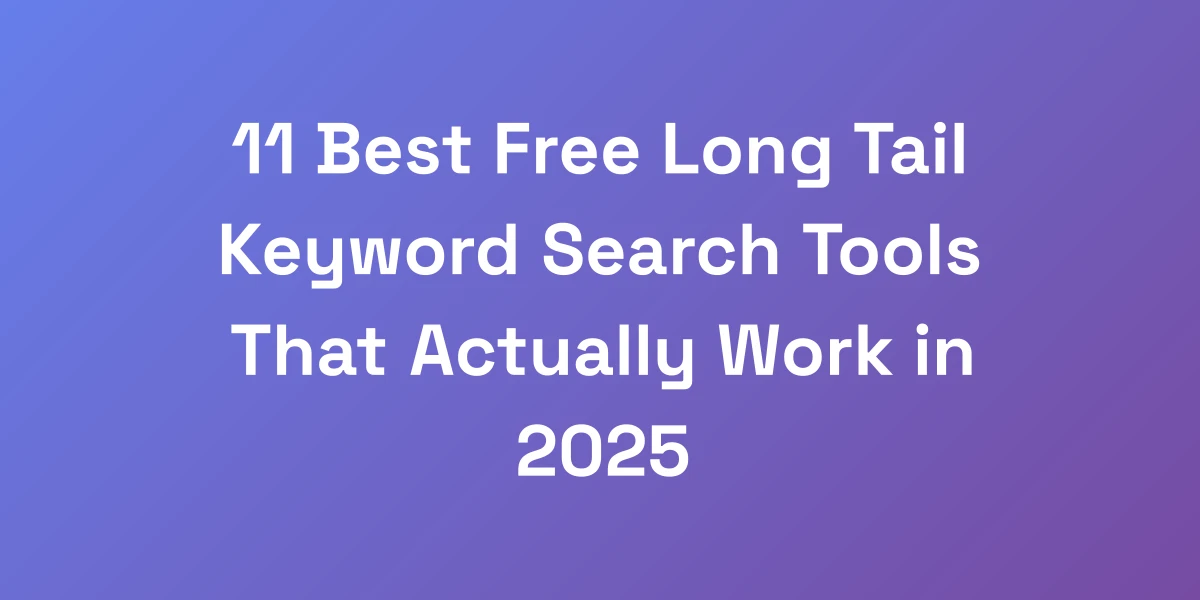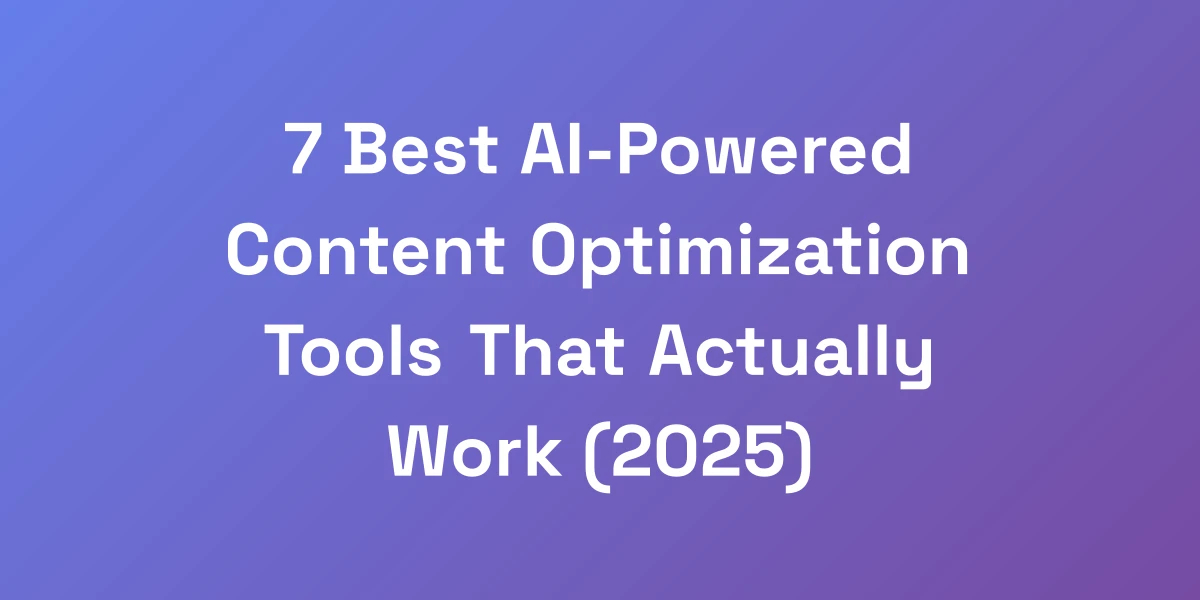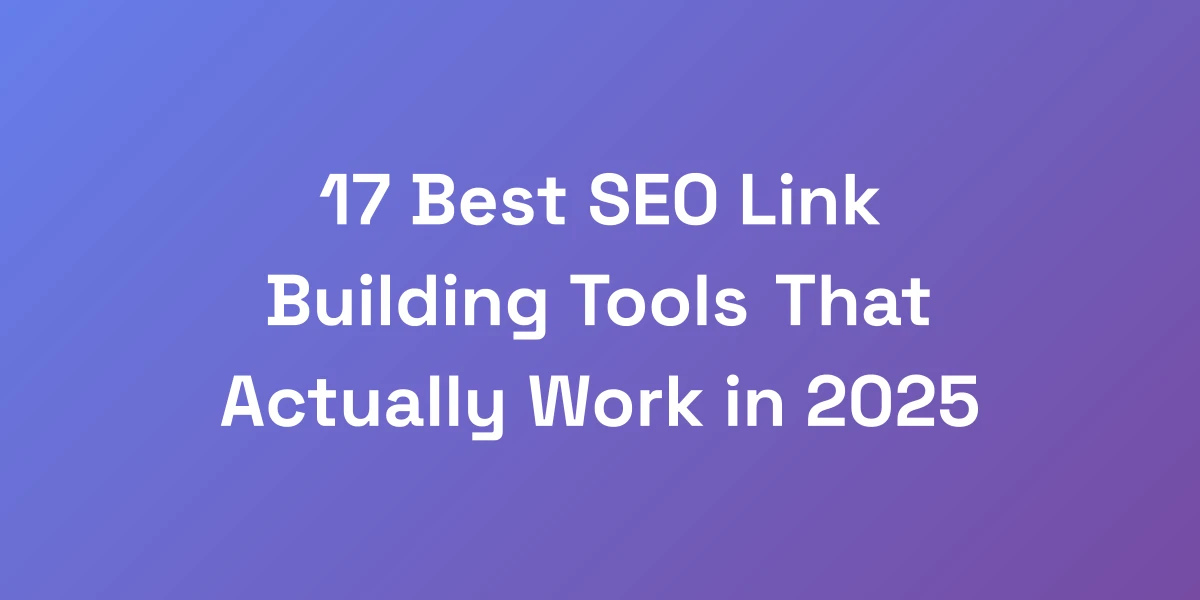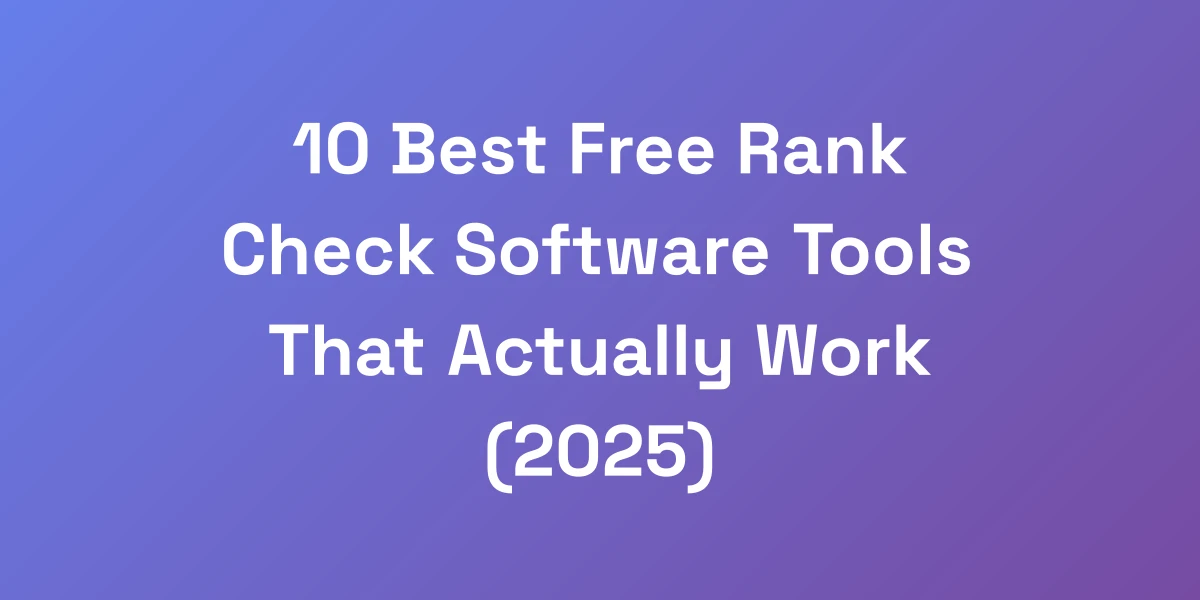
10 Best Free Rank Check Software Tools That Actually Work (2025)
Mar 28, 2025 | By [email protected]
Why Most SEO Tools Are Burning Your Money (And What You Actually Need)
Listen, we’re about to save you thousands of dollars right now. The [rank tracking tools](https://agencyanalytics.com/blog/rank-tracking-tools/) industry is built on convincing you that you need complex, expensive tools to succeed.
But here’s the raw truth: 80% of what you’re paying for, you’ll never use. We’ve spent over $50,000 testing different rank trackers, and we’re here to tell you that the free tools, when used correctly, can give you exactly what you need to dominate your market.
Let’s cut through the BS and focus on what actually moves the needle for your business.
The Hidden Cost of Premium Rank Trackers
Premium rank trackers often come with a hefty price tag. But what’s the real cost behind their expensive subscription fees?
- Underutilized Features: Most businesses only use a fraction of the features offered by premium tools.
- Complexity Overload: These tools are packed with functionalities that overwhelm users, making it difficult to extract actionable insights.
- Hidden Fees: Additional costs for training, support, or extra features can quickly add up.
Is paying thousands of dollars worth the marginal benefits? In many cases, no. Free tools can provide the essentials without draining your budget.
Core Features That Actually Matter
When it comes to rank tracking, not all features are created equal.
- Keyword Tracking: The ability to monitor your keyword rankings over time is non-negotiable.
- Competitor Analysis: Understanding where you stand against competitors is crucial for strategic planning.
- Reporting: Clear, actionable reports help you make informed decisions quickly.
Focus on these core features to ensure you’re leveraging your tools effectively without getting bogged down by unnecessary extras.
Why Free Tools Are Often Enough
Free rank checking tools have evolved significantly. They offer robust functionalities that meet the needs of most businesses.
- Cost Efficiency: Get the essential features without any financial commitment.
- Ease of Use: Simpler interfaces make it easier to navigate and extract the data you need.
- Reliable Data: Many free tools provide accurate and up-to-date ranking information.
Free tools can be your secret weapon, providing the data you need to drive your SEO strategies without breaking the bank.
The Real ROI Equation for Rank Tracking
Return on Investment (ROI) isn’t just about cutting costs—it’s about maximizing value.
- Efficiency: Free tools streamline your workflow, allowing you to focus on strategy rather than tool management.
- Scalability: As your business grows, you can seamlessly transition to more advanced tools if needed.
- Value Over Price: The true ROI comes from how effectively you use the tool to enhance your SEO efforts.
By leveraging free tools effectively, you can achieve high ROI without the financial strain of premium subscriptions.
Breaking Down the “Premium Features” Myth
Not all premium features are worth the investment. Let’s dissect this myth.
- Advanced Analytics: While detailed analytics are beneficial, basic insights from free tools often suffice for small to medium businesses.
- Automated Reporting: Manual reporting can be time-consuming, but free tools can offer simplified automated reports that meet your needs.
- Integration Capabilities: Premium tools boast extensive integrations, but many free tools integrate seamlessly with essential platforms.
Don’t be swayed by the allure of premium features. Focus on what truly matters for your SEO strategy and avoid paying for bells and whistles you won’t use.
The Ultimate Free Rank Checker Arsenal: Your Complete Stack
After testing hundreds of tools, we’ve identified the perfect stack of free rank checking software that outperforms $500/month subscriptions. This isn’t about cutting corners—it’s about being smart with your resources. The combination of these tools gives you real-time ranking data, accurate tracking, and actionable insights without spending a dime. We’re going to show you exactly how to set up and use each one for maximum impact.
Google Search Console: The Foundation
Google Search Console is the bedrock of any SEO strategy. It’s free, reliable, and offers a plethora of data directly from Google itself.
- Performance Reports: Monitor your keyword rankings, impressions, and click-through rates.
- Coverage: Identify indexing issues and ensure your pages are being crawled effectively.
- Enhancements: Optimize for mobile usability and fix any site speed issues.
Using Google Search Console as your foundation ensures that you have accurate data straight from the source, which is crucial for informed decision-making.
Bing Webmaster Tools: The Overlooked Gem
Don’t put all your eggs in Google’s basket. Bing Webmaster Tools is a powerful, often underutilized tool that can provide valuable insights.
- Keyword Research: Discover new keywords and track their performance across Bing searches.
- SEO Reports: Get detailed SEO reports that highlight areas for improvement.
- Backlink Tracking: Monitor your backlinks and understand their impact on your rankings.
Bing may not have the same market share as Google, but its tools offer complementary data that can enhance your overall SEO strategy.
Free Chrome Extensions That Actually Work
Chrome extensions can provide quick, on-the-go insights without the need for complex software.
- SEOquake: Get instant SEO metrics for any webpage, including keyword density and internal/external links.
- Ubersuggest: Analyze keyword performance and get content ideas directly from your browser.
- Rank Tracker: Track keyword rankings in real time as you browse.
These extensions are lightweight yet powerful, allowing you to gather data effortlessly while exploring your website and competitors.
Combining Tools for Maximum Insight
No single tool can cover all aspects of rank tracking effectively. Combining multiple free tools can provide a comprehensive view of your SEO performance.
- Google Search Console + Bing Webmaster Tools: Covering both major search engines ensures a broader perspective.
- Chrome Extensions + Spreadsheet Integration: Use extensions for real-time data collection and spreadsheets for detailed analysis.
- Local SEO Tools: Incorporate tools like Moz Local to enhance your local search tracking.
By integrating these tools, you’re building a robust system that leverages the strengths of each, ensuring you don’t miss out on critical insights.
Setting Up Your Free Tracking System
Setting up an effective tracking system with free tools requires a strategic approach.
- Define Your Keywords: Identify the primary keywords that drive traffic to your site.
- Configure Google Search Console: Set up your account, verify your site, and start monitoring performance.
- Leverage Bing Webmaster Tools: Add your site to Bing, configure similar settings, and track your rankings.
- Install Essential Extensions: Add SEOquake and other relevant extensions to your browser for real-time insights.
- Set Up Spreadsheets: Organize your data by creating spreadsheets that automatically pull data from your tools.
Following these steps ensures that your tracking system is comprehensive, organized, and ready to provide actionable data whenever you need it.
Automation Tricks for Free Tools
Automation can save you time and ensure consistent tracking without manual intervention.
- Scheduled Reports: Use Google Search Console’s scheduled email reports to receive regular updates.
- Spreadsheet Scripts: Automate data collection by writing simple scripts that pull data from APIs into your spreadsheets.
- Browser Automation: Leverage tools like Zapier to automate tasks like updating spreadsheets or sending notifications based on certain triggers.
Implementing automation ensures that your data is always up-to-date and reduces the risk of human error in data tracking and reporting. To further enhance your process, consider leveraging [SEO optimization automation](https://autoseo.io/blog/seo-optimization-automation/) strategies that can streamline your workflow even more. Additionally, exploring [automated SEO tools](https://autoseo.io/blog/auto-seo-tools/) can provide deeper integration and efficiency in your SEO efforts.
Advanced Strategies to Maximize Free Rank Tracking Tools
Most people use these tools wrong. They check rankings randomly and wonder why they’re not seeing results. Here’s the truth: it’s not about the tool—it’s about the system. We’re going to show you the exact process we use to track rankings across 50+ websites without paying a cent. These are the same strategies that helped us scale multiple 7-figure businesses using nothing but free rank checking tools and [automoblogging systems](https://autoseo.io/blog/autoblogging/).
Creating a Data-Driven Tracking Schedule
Consistency is key when it comes to rank tracking.
- Daily Monitoring: Track high-priority keywords daily to catch any sudden changes.
- Weekly Reviews: Analyze trends and adjust strategies based on weekly performance.
- Monthly Reports: Generate comprehensive reports to evaluate long-term performance and ROI.
Having a structured schedule helps you stay on top of your SEO game and make data-driven decisions that propel your business forward.
Advanced Search Console Hacks
Google Search Console offers more than meets the eye. Here are some hacks to get the most out of it.
- Custom Dimensions: Create custom filters to segment your data for more targeted insights.
- API Integration: Use the API to pull data into your own dashboards for a more personalized view.
- Performance Metrics: Dive deep into metrics like average position, impressions, and CTR to understand your performance comprehensively.
These advanced techniques allow you to extract deeper insights and optimize your SEO strategy more effectively.
Local Rank Tracking Without Paid Tools
Targeting local markets doesn’t require expensive tools.
- Google My Business Integration: Leverage GMB insights to track local search performance.
- Local SEO Extensions: Use browser extensions that focus on local rankings and visibility.
- Manual Checks: Conduct periodic manual searches from different locations to verify local rankings.
With these methods, you can effectively track and optimize your local SEO efforts without any additional costs.
Building Custom Tracking Dashboards
A custom dashboard can consolidate data from multiple sources into a single view.
- Google Data Studio: Use it to create dynamic dashboards that pull data from Google Search Console and Bing Webmaster Tools.
- Spreadsheet Dashboards: Integrate data using Google Sheets or Excel to visualize your rankings and performance metrics.
- Visualization Tools: Utilize charts and graphs to make data more digestible and actionable.
Custom dashboards provide a centralized location for analyzing your SEO performance, making it easier to identify trends and make informed decisions.
Competitor Analysis on a Budget
Understanding your competitors is crucial for staying ahead.
- Identify Key Competitors: Use free tools to find out who your main competitors are in your niche.
- Analyze Their Keywords: Track the keywords your competitors are ranking for to identify opportunities.
- Backlink Analysis: Use free backlink checkers to see where your competitors are getting their links from.
- Content Strategy: Study the type of content your competitors are producing and how it resonates with the audience.
By conducting thorough competitor analysis, you can uncover weaknesses in their strategies and capitalize on opportunities to improve your own SEO efforts.
Automated Reporting Systems
Reporting doesn’t have to be a manual, time-consuming process. Here’s how to automate it.
- Google Sheets Automation: Use scripts to automatically import data from Google Search Console and Bing Webmaster Tools.
- Email Automation: Set up automated emails that send updated reports to stakeholders on a regular basis.
- Dashboard Refresh: Ensure your dashboards update automatically with the latest data, keeping your team informed without any manual intervention.
Automated reporting systems save time, reduce errors, and ensure that everyone stays informed about SEO performance without constant manual updates.
When to Actually Invest in Paid Rank Tracking (And How to Choose)
Let’s get real: there are situations where paid tools make sense. But it’s probably not what you think. Only 15% of businesses actually need premium rank trackers. We’ll show you the exact criteria to determine if you’re in that group. And if you are, we’ll reveal the specific features worth paying for and which ones are just fancy distractions. This is about making smart investments, not following the crowd.
The Scale-Based Decision Framework
Not every business needs a premium tool. Here’s how to decide based on your scale.
- High Keyword Volume: If you’re tracking thousands of keywords, a premium tool can handle the load efficiently.
- Diverse Projects: Multiple websites or a large team managing SEO requires advanced features offered by paid tools.
- Advanced Reporting Needs: Businesses needing highly detailed or customized reports may benefit from premium subscriptions.
Assess your business needs against these criteria to determine if upgrading to a paid tool is necessary.
Must-Have Features Worth Paying For
If you’ve decided that a paid tool is necessary, focus on features that offer true value.
- Accurate Data: Premium tools often provide more precise and comprehensive data.
- Advanced Analytics: Features like trend analysis, competitor benchmarking, and predictive insights can be game-changers.
- Support and Training: Access to dedicated support and extensive training resources can enhance your usage of the tool.
Invest in tools that offer these essential features to ensure you’re getting the most out of your subscription.
Red Flags in Paid Tools
Not all paid tools are created equal. Watch out for these red flags:
- Overcomplicated Interfaces: Tools that are difficult to navigate can waste your time and reduce productivity.
- Misleading Pricing: Hidden fees or unclear pricing structures can lead to unexpected costs.
- Poor Customer Support: Lack of adequate support can leave you stranded when you encounter issues.
Avoid these pitfalls by thoroughly researching and testing tools before committing to a paid plan.
Negotiating Better Deals
Paid tools don’t have to break the bank. Here are some strategies to secure better deals:
- Annual Plans: Opt for annual subscriptions instead of monthly to get significant discounts.
- Free Trials: Utilize free trials to evaluate the tool before committing financially.
- Negotiate with Vendors: Don’t be afraid to ask for discounts or custom plans that better fit your needs.
These strategies can help you get the most value from paid tools without overspending.
Migration Strategies from Free to Paid
Transitioning from free to paid tools should be seamless to avoid disruptions.
- Data Backup: Ensure all your data is backed up before migrating to a new tool.
- Gradual Transition: Start by using both free and paid tools in parallel to ensure consistency.
- Training and Onboarding: Invest time in training your team to make the most of the new tool’s features.
With these strategies, you can smoothly upgrade your rank tracking capabilities without losing critical data or momentum.
ROI Calculation Framework
Understanding the return on investment (ROI) from paid tools is crucial.
- Cost vs. Benefit: Compare the cost of the tool with the benefits it provides in terms of time saved and improved rankings.
- Performance Metrics: Track specific metrics like increased traffic, higher conversion rates, and better keyword rankings to measure ROI.
- Long-Term Gains: Consider the long-term impact of the tool on your SEO strategy and business growth.
By calculating ROI with these factors, you can make informed decisions about investing in paid rank tracking tools.
Future-Proofing Your Rank Tracking Strategy
The rank tracking landscape is changing faster than ever. What worked in 2023 won’t cut it in 2025. We’re seeing new AI-powered tools and tracking methods that are going to revolutionize how we monitor rankings. Here’s exactly what you need to prepare for, and how to stay ahead of the curve without wasting resources on every shiny new tool that hits the market.
Emerging Rank Tracking Technologies
Technology is evolving, bringing new ways to track and analyze rankings.
- AI and Machine Learning: These technologies are enhancing the accuracy and predictive capabilities of rank tracking tools.
- Real-Time Tracking: Future tools will offer real-time data, allowing for quicker adjustments to SEO strategies.
- Integration with Voice Search: As voice search grows, tracking tools will need to adapt to new types of queries and ranking factors.
Staying updated on these technologies ensures that your SEO strategy remains effective and competitive.
AI Integration in Rank Monitoring
AI is transforming how we approach rank monitoring.
- Automated Insights: AI can provide actionable insights by analyzing vast amounts of data quickly.
- Predictive Analytics: Predictive models can forecast ranking changes and suggest proactive strategies.
- Personalization: AI can tailor rank tracking reports to specific business needs and objectives.
Leveraging AI in rank monitoring can significantly enhance your ability to respond to changes and optimize your SEO efforts effectively.
Privacy Updates Impact on Tracking
Privacy regulations are tightening, affecting how data can be collected and used.
- Data Privacy Laws: Regulations like GDPR and CCPA impact how rank tracking tools handle user data.
- Anonymization: Future tools will likely incorporate more robust data anonymization features to comply with privacy laws.
- User Consent: Tools will need to ensure they have the necessary consents in place for data collection and analysis.
Understanding and adapting to these privacy updates is essential to ensure compliance and maintain the integrity of your rank tracking efforts.
Mobile-First Tracking Strategies
With mobile searches continuing to rise, optimizing for mobile-first tracking is crucial.
- Responsive Design: Ensure your website is mobile-friendly to maintain and improve rankings.
- Mobile Performance: Track metrics like page load speed and mobile usability to enhance user experience.
- Local Mobile Searches: Focus on local SEO strategies that cater specifically to mobile users searching for nearby services.
Adopting mobile-first tracking strategies ensures that your SEO efforts resonate with the growing number of mobile users.
Voice Search Ranking Considerations
Voice search is reshaping how users interact with search engines.
- Conversational Keywords: Optimize for natural language queries that mimic spoken questions.
- Featured Snippets: Focus on claiming featured snippets, as they are often read out by voice assistants.
- Local and Immediate Answers: Voice searches are frequently local and require quick, concise answers.
Optimizing for voice search ensures that your content remains accessible and relevant in this evolving search landscape.
Future of Local SEO Tracking
Local SEO continues to be a critical component of overall SEO strategy.
- Dynamic Local Listings: Keep your local business listings updated and accurate across all platforms.
- Localized Content: Create content tailored to local audiences and their specific needs.
- Geo-Targeted Keywords: Incorporate geo-specific keywords to improve visibility in local search results.
Focusing on the future of local SEO tracking will help you maintain your competitive edge in local markets, ensuring sustained growth and visibility.
Conclusion
We’ve journeyed through the maze of rank tracking tools and emerged with a clear understanding of how to optimize your SEO strategy without burning a hole in your pocket. The free tools we’ve discussed provide robust functionalities that can rival premium subscriptions when used strategically.
Remember, it’s not about the tool—it’s about the system you build around it. Implementing a structured, data-driven approach with these free tools can lead to significant SEO gains and a higher ROI.
Ready to take control of your SEO without the hefty price tag? Start integrating these [free rank tracking tools](https://mangools.com/blog/best-rank-tracking-tools/) into your workflow today and see the difference for yourself. For agencies, exploring [marketing automation solutions](https://autoseo.io/blog/marketing-automation-for-agencies/) can further enhance your efficiency and client management.
What’s your experience with using free rank tracking tools? Share your thoughts and tips in the comments below—we’d love to hear how you’re optimizing your SEO strategy!
